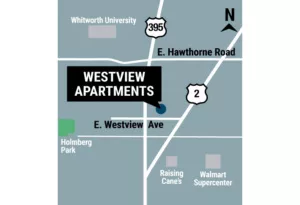
Home » Inland Northwest mining jobs increase; miners are in demand
Inland Northwest mining jobs increase; miners are in demand
Skilled workforce shrinks amid global job pressure as industry enjoys uptick

January 5, 2012
A miner in North Idaho's Silver Valley now can earn up to $175,000 a year, including benefits, says Hecla Mining Co. President and CEO Phil Baker, providing a glimpse into a workforce trend affected by international competition and a domestic shortage of skilled workers.
While that's on the high end of the pay spectrum, Coeur d'Alene-based Hecla's average yearly pay for its mining employees is currently at about $90,000, including benefits, Baker says, a significant jump since the mining slump of the mid-2000s.
"That's about double what it was about eight years ago," Baker says, citing competitive pressures at least in part for the higher wage pattern.
Another factor, however, is Hecla's improved company margins that are benefitting from record metal prices and demand this past year. "Frankly, there is an opportunity to pay our workforce more and still have robust margins," he says.
He says that while a shortage of U.S. skilled miners is expected to worsen, Hecla continues to retain and draw employees who want to work at its two established mines—the Lucky Friday silver mine in North Idaho and the Greens Creek lead-zinc-silver-gold mine in Alaska. Combined, those mines currently employ about 700 people.
However, Baker adds, "If you don't increase salaries for existing employees, then they go somewhere else," including worldwide, if people are willing to move to jobs in other counties.
A Nov. 17 Wall Street Journal story said workers are making $200,000 a year in Western Australia, running drills in underground mines to extract gold and other minerals. Mine companies in countries such as Australia and Canada are experiencing mining booms and are wooing recent graduates of U.S. mining schools.
Overall in the U.S., industry observers are describing both a current and impending shortage of skilled mine workers. That's due to several factors, they say, including a decline in the number of people who entered the field during a long industry slump, the current high number of retirement-age employees, and a rising number of mine workers accepting lucrative offers to relocate to other countries.
Coeur d'Alene Mines Corp.'s Luke Russell, vice president of environment, health, and safety, describes another pressure impacting the mining workforce—a lost decade in significant educational funneling of workers.
"Ten years ago, the mining industry in the U.S. was perceived to be in a perpetual decline, and many university schools of mining closed, so there was downturn also in education," he says. "With the cyclical nature of mining, the industry has come back very strong, and we do have a big shortage of skilled mining workers in the U.S."
The industry needs across-the-board workers, from skilled laborers such as mechanics to college-graduate mining engineers, he says. Of professionals with three to five years of experience and options globally, he says, "They're almost writing their own ticket."
"Internationally, companies are looking at mining as a growth industry," Russell says. "That's not happening as fast in the U.S. because of the political environment; it takes longer to permit a mine, and there are delays in opening new mines in the U.S. Internationally, that's where the jobs are going, and their economies are being built on the back of mining, so there's a draw. We're seeing folks leaving the U.S. for those jobs."
He adds, "We're sort of missing a generation of skilled workers in the U.S., and the ones who do have the skills are being attracted internationally by very high wages. There's certainly a shortage as well at Coeur mines. Internationally, they're paying very well, and students coming out of mining schools are being given signing bonuses because of the demand and low supply."
In response, he says Coeur for the first time hired a full-time recruiter at its corporate office in the past year to support workforce needs at all the company's mines, which include a silver mine in Bolivia, a silver-gold mine in Mexico, and the Kensington gold mine in Alaska. Additionally, the company has silver-gold mines in Nevada and Argentina. The company employs almost 1,900 worldwide, the majority working at mining operations.
Coeur's annual pay for an experienced miner is around $65,000 at a base, which often doubles with performance incentives and overtime pay, Russell says. When benefits are factored in, he says higher levels earned reach $165,000 to $175,000.
Michael Nelson, chairman of the University of Utah mining engineering department, says the U.S. currently has about a dozen mining schools, and that even during the recession, graduates saw consistent demand. "It has really accelerated the past two to three years," he says.
He says at Utah, most students graduating in May already have at least three job offers, ranging from $70,000 to $85,000 for starting salaries. He adds that one offer included a $20,000 signing bonus, while others had offers of assistance in buying a house, $5,000 down toward a house and payment of closing costs. "Those are the incentives that are being offered; it indicates the shortage that's being seen for mining engineers," he says.
He adds, "Those are all in the U.S. There is a shortage of mining engineers in Canada, the U.S., and Australia. The shortage is more severe in Australia right now because their industry is growing so quickly. We've seen offers for new graduates to go to Australia starting at $90,000 and year, and engineers with two to five years' experience are being offered salaries of around $200,000 a year."
Baker uses a barbell analogy to describe the U.S. workforce in metals and mineral production.
"There was effectively a depression for metals from the mid-1980s to the mid-2000 timeframe," he says, adding that now, "You have a lot of people who are nearing retirement age, and you have a lot who are fairly new in the business. There's a skinny group of people in between. They came in when there was a big decline in metal prices, (and) a lot of people got out of the business."
The mining industry as a whole is experiencing an unprecedented demand for metals and natural resources, Baker adds, influenced by such factors as development in Asia and elsewhere pushing a demand for steel, and the worldwide use of silver for newer technologies.
Mining is one of the few industries nationally where long-term, well-paying jobs are being added, says a report for the National Academy of Sciences on emerging U.S. mining workforce trends, undertaken by The Society for Mining, Metallurgy and Exploration. Completed in December, it says that in one year—between June 2010 and 2011—coal mining jobs grew 7.6 percent, metals mining jobs grew 3.9 percent, and jobs in support activities for mining grew at a rate of 19.2 percent.
The report says, "Even this last year, as overall job growth hit a standstill, mining continues to add jobs at an impressive rate. From June 2010 to June 2011, metal and coal mining added 11,000 direct and 17,000 mining support jobs at salaries well above the national average for all private-sector jobs."
The report also says, "Retirement and projected global increase in demand for mine labor will likely provide a steady stream of new jobs with attractive wages. For a period of time, the U.S. will have a workforce composed of very young and very senior workers."
The study conducted by the Society found that the U.S. mining industry—when including coal, metal, industrial minerals and aggregates—on average employs about 350,000 people in the U.S., says John Hayden, its director of public affairs and government relations.
The average rate of job addition is expected to remain between 11,000 and 13,000 per year in the U.S., "for the foreseeable future," he says. Projections for U.S. mining labor indicate an addition of about 50,000 workers by 2019, but for that gain to be offset by the loss of about 78,000 employees due to retirement over that same period. By 2029, over half the current workforce—about 221,000 U.S. mining workers—will have retired.
Baker says the outlook for employment in the industry will likely remain strong for some time.
"There will be ups and downs for the prices of the products, and that will be driven by supply-and-demand fundamentals, but what is true in respect to silver is it's in demand in a way that it's never been before," he says.
He adds, "As far as the outlook for employment in the industry, it's probably the best it's been in 120 years. It doesn't mean you'll always have high prices, but there certainly will be demand for people to do the work."
Russell says proactive steps the industry can take include reaching out to state employment offices, and going into schools to encourage an interest in sciences. "We'll need to improve efficiencies." Russell adds. "We do envision a continued stress point on that mid-level experience for some time."
He adds, "The last three to four years, it's been a real challenge. With the industry in a boom period, there's a lot of demand for that missing generation."
Latest News
Related Articles


